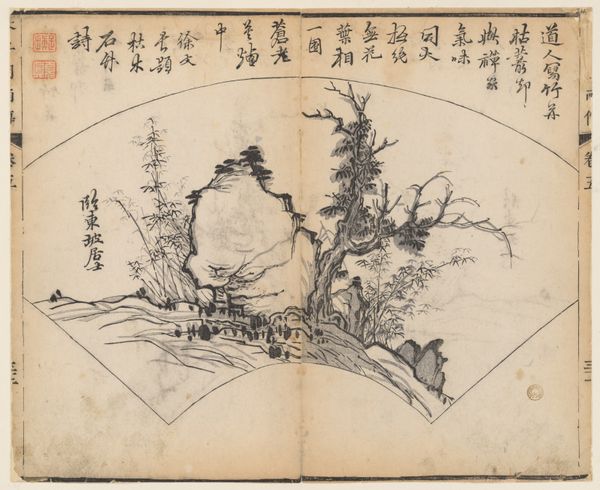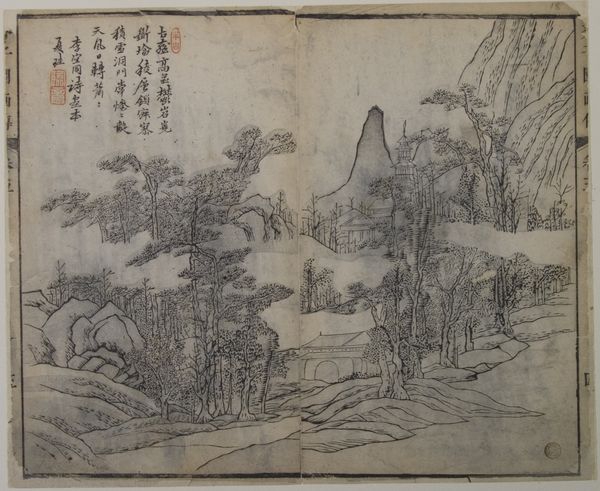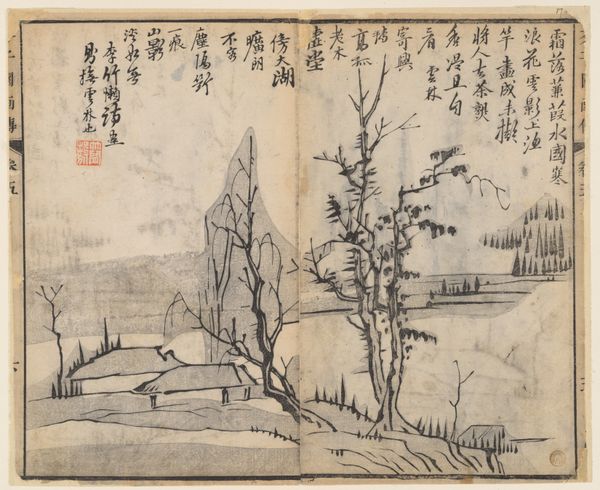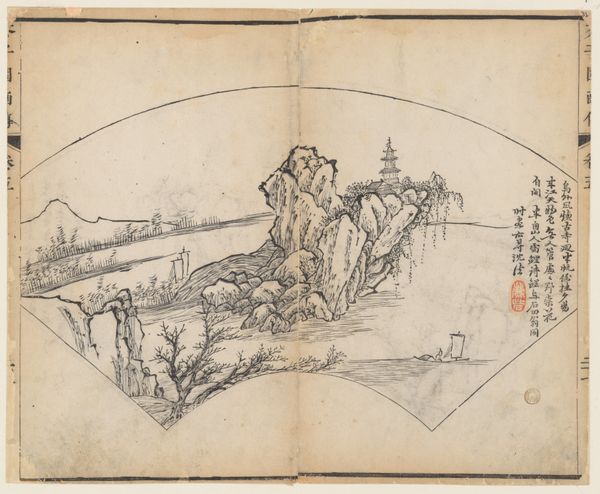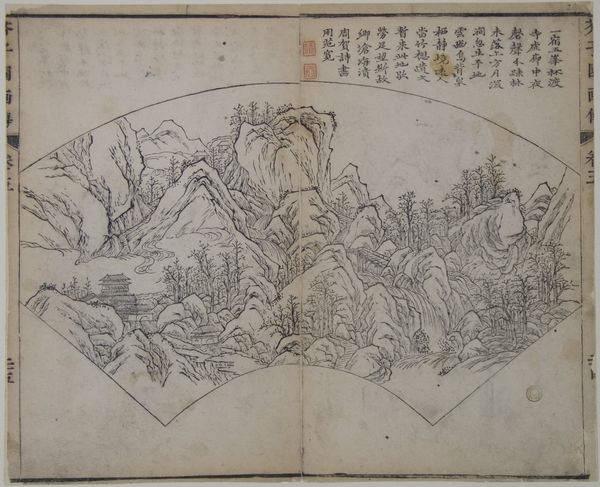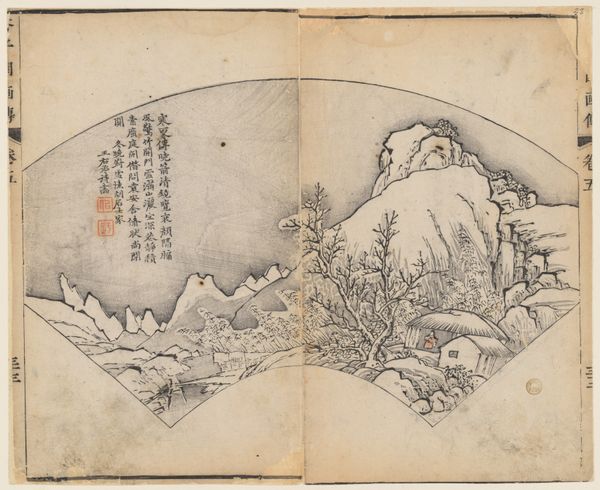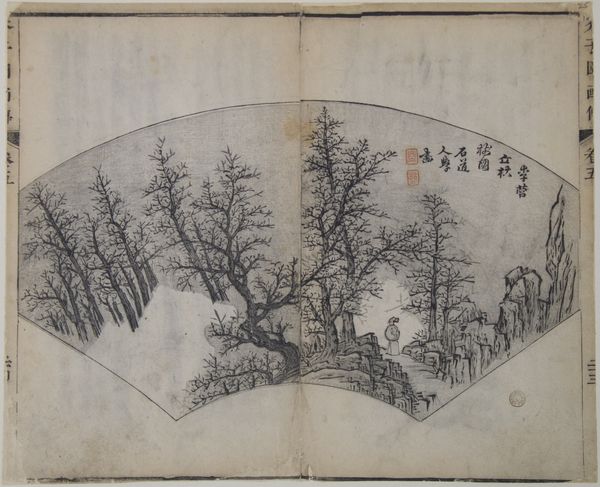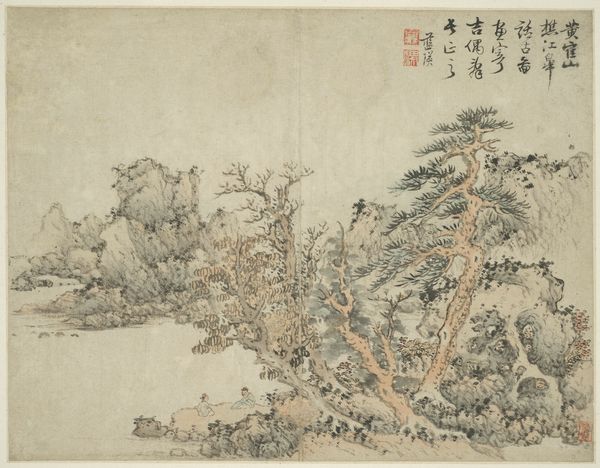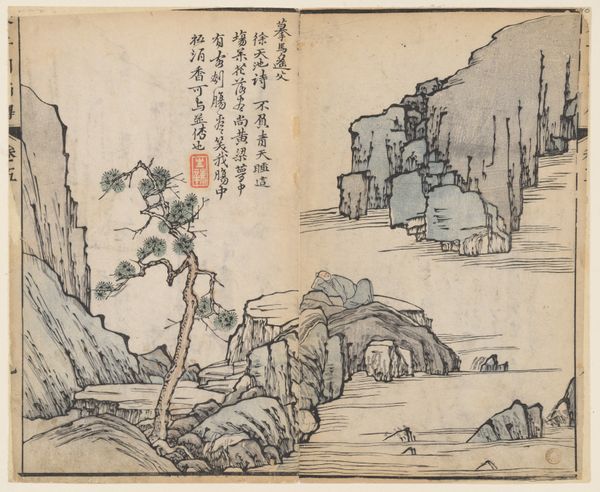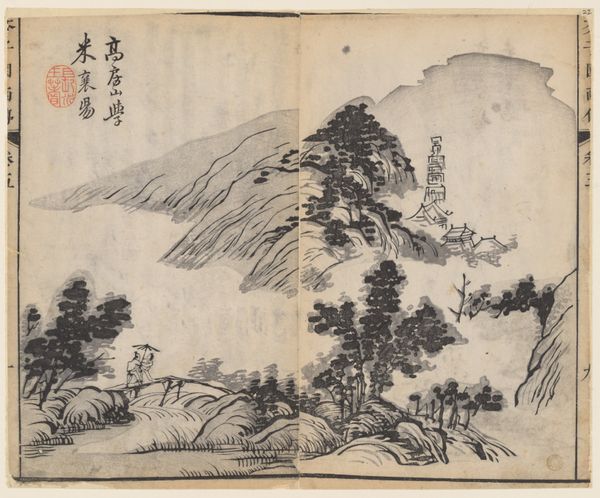
drawing, print, paper, ink, woodblock-print
#
drawing
# print
#
asian-art
#
landscape
#
paper
#
ink
#
woodblock-print
#
orientalism
#
china
Dimensions: 9 5/8 x 11 13/16 in. (24.4 x 30 cm)
Copyright: Public Domain
Editor: This is a page from the "Mustard Seed Garden Manual of Painting," created in 1679 by Wang Gai. It's a print, a drawing really, of an idealized landscape. It feels incredibly delicate. What’s striking to me is the bare simplicity. What’s your take on it? Curator: As a manual, this page is fascinating. It reveals the material process and techniques involved in creating art. Note the very specific strokes used for the trees, the mountains, the water. The materiality of ink, paper, and woodblock printing makes artistic skill accessible by disseminating this reproducible technology. Editor: So it's about democratizing art production, not just admiring the final product? Curator: Precisely. We must consider its social context and function. This wasn't simply about high art, but about making art-making knowledge a commodity. Consider how labor is involved in producing the woodblocks themselves. What does that tell you about consumption of art knowledge? Editor: It speaks to a burgeoning market, maybe a new middle class seeking cultural refinement through art practice? Curator: Absolutely! And observe how the very limitations of woodblock printing, like line simplification and flattening of depth, become aesthetic choices in themselves. Do they challenge Western notions of artistic skill? Editor: It makes you reconsider "skill." Western art prioritizes realistic representation, but this emphasizes understanding, breaking down, and then reconstructing the elements of a landscape. So, skill lies in the distillation and process rather than pure imitation. Curator: Exactly. By examining the materials, techniques, and social function of this print, we move beyond mere aesthetic appreciation to understand the role of production in shaping artistic expression. Editor: This has really reshaped how I understand this manual; I won't just see beautiful art; I'll see the layers of labor and the intention to distribute art techniques.
Comments
No comments
Be the first to comment and join the conversation on the ultimate creative platform.

